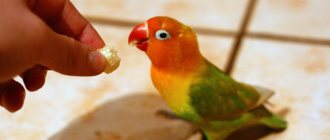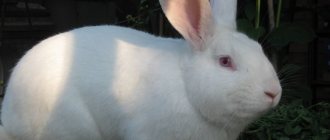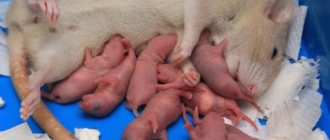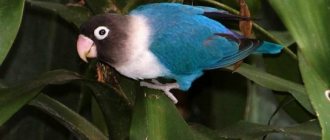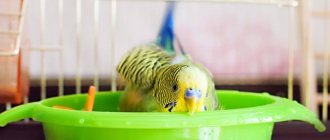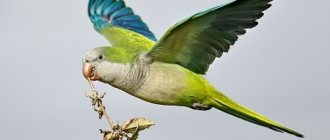Successful breeding of parrots is the result of great effort and special care. In order for the first attempt at breeding birds to go smoothly, it is necessary to provide for a number of nuances. This includes pair formation, choosing the optimal season, arranging a nest, and comprehensive nutrition. The article outlines basic tips for breeding budgerigars.
Right to breed
Breeding ornamental birds is not established by law, and this type of activity is not licensed. If a novice breeder plans to conduct his business in compliance with legal norms, he formalizes an individual entrepreneurship and registers with the tax service. A separate condition is joining the society of bird lovers in your region. In this organization you can get advice at any stage of breeding parrots at home.
Opening a parrot breeding business is very difficult if you have no experience in keeping them. Before you start raising and selling parrots, you need to thoroughly study the specifics of breeding chicks.
Beginners are advised to start with budgies, as these small birds breed readily in captivity. The profit from the sale of wavy chicks will be, although insignificant, but stable. The demand for exotic birds is high, so there will be no problems with sales.
Formation of a marriage union
Before you start breeding parrots, you need to remember that these are flocking birds. The breeder brings together several parrots of different sexes in one room, giving them the right to choose the object of affection. A budgie entering childbearing season must go through all stages of courtship, starting from meeting its partner.
Pairing rules:
- Healthy, strong offspring are possible only from parents without blood ties. Inbreeding leads to the appearance of weakened chicks with congenital anomalies. Sick birds with bad heredity do not live long.
- You cannot force a partner on your parrot. Forced marriage can be fruitless. It is better if the newlyweds choose each other themselves, then the offspring of the loving couple will appear soon.
- The suitable age for mating is one and a half years for females and one year for males. Budgerigars reach high fertility indicators at the age of two to four years. They do not lose their ability to reproduce until they are eight to nine years old. Older birds are not suitable for breeding.
- Females usually choose their own “spouse” and subsequently dominate. Experts advise placing a young female with an experienced male who has already established himself as a father. Then, as she grows up, the girl will not show a quarrelsome character, but will learn to obey her partner.
Attention! Birds that are obese, malnourished or during molting are not allowed to mate.
How to breed parrots: business features
First of all, it is worth considering several important features of this business. Firstly, to successfully breed parrots, it is important to love animals. Secondly, you need to understand the specifics of care and the need to spend time caring for your pets. It's not just about feeding and hygiene procedures: it is important to monitor their physical and mental health of the parrots.
Different species of birds have their own characteristics that need to be known and taken into account - some breed exclusively in an aviary, others need a lot of space, others require specific food or living conditions.
It is not difficult to start breeding birds with a couple of parrots, and it is easy to combine it with your main job. But 30-50 pairs of parrots will already require significant resources from you. Consider the option of involving your relatives and turning it into a family business, especially since you can breed at home, but you need to allocate a separate room for the birds.
Parrot chicks are noisy and require specific conditions (light, temperature), and they also emit a smell: you cannot live in a room with dozens of birds. You don’t need expensive equipment or significant investments - at the start, about 25,000 rubles will be enough for you.
But you need to be prepared for the fact that it will take at least three months to achieve payback. Birds must get used to the new place, form pairs and begin to bear offspring. It is also important to monitor the market and look for sales channels - if there is no demand for parrots in your city, it will be difficult for you to sell the chicks.
As for registering a business, you can register as a self-employed citizen.
Attention: It is important that this tax regime applies in your region, that you do not have employees, and that your income does not exceed 2.4 million rubles per year.
But if you want to work with pet stores, then it is better to register as an individual entrepreneur. OKVED code 01.49 – Breeding of other animals.
Best period for breeding
In wild budgerigars living in Australia, the instinct of procreation manifests itself in winter (in the southern hemisphere this is June - August, the rainy season). Domesticated birds are not so tied to a specific time of year; the breeding period is chosen by breeders.
It is better to stimulate the breeding instinct of budgerigars during the summer months. Warmth and long daylight hours promote the production of sex hormones. Our winter and spring are not suitable for pimping, as the birds’ bodies are weakened. The chances of healthy offspring are slim.
Preparation of birds includes a set of actions aimed at improving their health and living conditions:
- increasing the duration of daylight up to 16 hours (adding gradually, 1 - 2 hours a day), turning on additional lighting;
- maintaining the air temperature at least 22 degrees;
- adding mineral elements (calcium, phosphorus) and vitamins to the diet.
An intermediate stage of preparatory activities is hanging the nesting house. Having seen the future “maternity hospital”, the female begins to intensively settle in it - to nest.
Note: a smart breeder plans the nesting of parrots, taking into account his workload. The time of incubation of eggs and feeding of chicks is a busy time when birds require round-the-clock supervision.
Disinfection
All equipment, items and accessories that will be used during the breeding season of parrots must be disinfected. These include:
- Cell;
- bowls for food and drink;
- toys.
Each of these items is disinfected in one way. To do this you need:
- Dissolve a weak solution of bleach or bleach in hot water.
- Soak the item to be disinfected in the resulting liquid.
- Rinse and clean the item with a brush.
- Rinse the item thoroughly.
The nesting house also needs disinfection, but in a different way. Step-by-step procedure:
- Disassemble the structure of the house into parts.
- Clean all elements with a brush dipped in water and baby soap.
- Dry everything thoroughly.
- Depending on the material from which the nest is made, the washed and dried house is calcined either in an oven preheated to +120°C for 30-40 minutes, or on a gas burner until the outer wall is heated. Plastic houses are kept in the sun for 6-8 hours.
The nest filler (hay or sawdust) must be pre-mixed with dried medicinal chamomile in equal proportions before placing it in the house - this will prevent the appearance of parasites (ticks, etc.) in the filler, and will also strengthen the bird’s nervous system. The floor in the house should not be open. Before the chicks hatch, it is not recommended to sprinkle sawdust on the floor of the nest - the egg may get lost in it. Therefore, it is better to use hay first, and after the chicks are born, place sawdust in the house.
What should a cell be like?
Budgerigars are small birds, so a family cage does not need to be very large. One pair will comfortably fit in a structure measuring 80/60/40 cm; for two pairs the parameters are multiplied by two. Breeders who have started breeding parrots combine several birds in spacious enclosures. It is recommended to place each family separately so that there are no quarrels between them. While incubating eggs, the female needs rest.
A nesting house - a nest box - is attached to the side wall of the cage. You can hang the house inside the cage, but then its useful volume will be reduced. It’s easy to make a nesting box yourself from several planks or buy it at a pet store. For ease of observation and cleaning, the nest cover should be removable or hinged. The female does not build a cozy nest out of twigs, but peels and drags twigs inside the house. You can make her task easier by placing sawdust mixed with dried chamomile in the cage.
Equipment purchase
To breed birds you do not need to purchase a lot of different equipment. You will need:
- Aviary (or galvanized mesh, if you do it yourself)
- Drinkers and feeders
- Wooden houses or other types of nests
- Cells
Equipment costs will be about 20-30 thousand rubles. It is also worth purchasing a sufficient amount of food. Give preference to Italian and Belgian manufacturers.
What to feed
Parrots that have entered the breeding phase show increased interest in mineral nutrition. Make sure that there is always sepia, mineral mixture, stone in the cage. Chalk is suitable as a source of calcium. You can simply crush calcium gluconate tablets and add them to the grain mixture, which has been slightly moistened beforehand. Mineral substances entering the body of the expectant mother are absorbed and help avoid the fragility of the shell.
The health of mating parrots directly depends on proper maintenance and good food. Future parents deserve enhanced nutrition:
- The awakening of the sexual instinct is facilitated by the consumption of sprouted grains;
- For the normal formation of eggs, unleavened cereals, kefir, and vegetables are added to the usual menu of budgies;
- This is a popular treat for nesting birds among breeders: a salad of grated carrots, chopped eggs, cottage cheese and sprouts. This dish is not for every day, but eating this mixture twice a week is very useful.
As soon as the female lays eggs and begins to incubate them, stop giving her soft food and increase the daily intake of grains and seeds. The female spends a lot of energy heating the eggs; she needs high-calorie food. The water in the drinking bowl must be changed frequently for fresh water. A bird can get sick by drinking stagnant liquid.
Attention: picky birds that feed only on grain should not be allowed to nest. A monotonous diet worsens the health of parrots and does not contribute to the emergence of strong chicks.
Male courtship
When a budgie decides on the object of its love, it begins to actively court. Strives to constantly be close to the female, polishes feathers, feeds her. In a fit of tenderness, he covers his lady with his wing, looks into her eyes, and nods his head. A male in love coos and dances, taps surrounding objects with his beak - displays.
If the female accepts the suitor favorably, she participates in his dances and responds to his kisses. Some females do not even take food on their own, waiting for the male to pass the treat from beak to beak. The most intimate process happens quickly and unnoticed by prying eyes. Mating games last for several days and even weeks, but sometimes one mating is enough for parrots to achieve fertilization. Next comes nesting time: the mystery of the birth of chicks.
How many eggs in one clutch
The readiness of a female parrot to lay eggs can be seen from her bare belly. For better contact and heating of the eggs, the female plucks feathers, and with them she insulates the nest. During the birth process, the bird freezes for a few minutes and rolls its eyes. Soon an egg appears. At this time, the future father sits for a long time near the nest, entertaining his partner by chirping. He brings food, helping the female regain her strength.
The young mother lays one egg per day. Usually, budgerigars have 3–5 eggs in one clutch, but in exceptional cases there are over ten. It depends on age: the older the bird, the more chicks it has.
Note: if the female lays a lot of eggs, she will not be able to heat everything. The breeder must save the embryos by placing eggs in an incubator or the nests of other parrots.
Budgerigars mating
Chicks from one offspring will be weak and non-viable. The same goes for birds that are too young. To get good offspring, choose only healthy birds. The best age for mating is from one year. Birds are able to reproduce up to 8 years.
Fly and early autumn are the best times for mating. If necessary, daylight hours can be artificially increased.
The birds are easy to care for and only require a couple of hours. Therefore, it is quite possible for one family to cope with it. But it will bring quite significant income. You can sell birds through pet stores, through friends and acquaintances. You can use resellers.
How many days to expect chicks?
As soon as the first eggs are laid, the female should immediately begin to hatch them. The male does not take part in this; his role is to bring food closer to his partner. The bird turns the eggs to ensure even heating. Sometimes it leaves the nest to drink and empty its bowels. In a few minutes, the eggs do not have time to cool down; a slight drop in temperature does not harm the embryos.
The normal hatching time for chicks is 18 days. After the time allotted by nature has passed, the chick breaks the shell from the inside with its beak and gets out. The female helps the cub to free itself and sometimes eats the shell. To prevent the newborn from sticking its skin to the shell, you need to maintain the air humidity in the room at 60%.
After the first baby hatches, remove soaked grains from the new mother’s diet. Remove the empty shells from the house with care, but do not touch the babies. Having sensed a foreign smell on the chicks, the bird may abandon them or show aggression.
Selecting a room
An aviary for birds in an apartment or house is the best option for breeding birds. Its size depends on the number of parrots and the free space you can allocate to it. It is ideal if you can insulate the balcony and place the enclosure there. This will give the birds more access to daylight. You also need to take care to constantly maintain the temperature and humidity at the required level.
In the aviary you need to place nests where birds can nest and hatch eggs.
To prevent birds from quarreling among themselves, place them higher, but at the same height and at a sufficient distance from each other. For nests, it is best to purchase wooden bird houses from specialized stores.
Also place toys, ladders and other items that will help the birds not get bored and exercise. After all, they will not have the opportunity to fly freely, and the lack of physical activity can negatively affect their health.
Care of offspring
Budgerigars are born so tiny and helpless! Their weight is only 1 - 2 grams. They are naked, weak and completely different from their grown-up counterparts. Female parrots are caring and gentle mothers. At first, the chicks do not hold their heads up, they constantly lie down. It is in this position that the mother feeds the chicks, hovering over the baby and releasing crop milk into the beak.
Tiny babies develop and grow very quickly: within a day their weight doubles. When the last chick from the clutch breaks through the shell and is released, the older brothers and sisters are much larger than it. There is a risk of the baby dying, so you should check the nest more often these days.
The breeder is required to observe and not unnecessarily disturb the bird with its brood. Perhaps the only justified intervention would be the selection of chicks from an inexperienced mother who refuses her children. In this case, the breeder has to feed and care for the babies.
Sales market: where to sell parrots
For sale, it is important to have a conclusion from a veterinarian that the chicks are free of diseases.
Main selling methods:
- Zoological shops. You can sell 10-20 individuals there at once, but the price will be lower than you can get on your own.
- Word of mouth. Write to your friends: perhaps they know who can buy a parrot chick.
- Independent sale through thematic forums and message boards.
- Independent selling through social networks.
Why are eggs infertile?
At the end of the incubation period, whole eggs sometimes remain in the nest. The female continues to hatch them, but she already has a lot of trouble with the newborn chicks. Eggs that have lain in the nest for more than three weeks are most likely useless and should be taken from the mother. Either the embryos stopped developing in them, or fertilization did not occur initially.
Why does it happen that chicks do not hatch from eggs? Causes of defective eggs:
- inexperience of the female, inability to evenly warm the entire clutch;
- genetic diseases;
- poor nutrition in preparation for the nesting period;
- infection in a female;
- unsuitable indoor microclimate.
One or two eggs left unbroken in the nest is normal. A high percentage of unfertilized eggs indicates problems in a pair of parrots. You can find out in advance about the quality of laid eggs using an ovoscope. After checking the condition of the embryos with the device, empty eggs must be removed from the clutch.
The result in breeding budgies depends on the level of knowledge and experience of the breeder. Preliminary preparation, good condition of the birds and close observation are the main components for obtaining healthy offspring.

